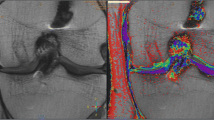Abstract
Tendon autograft was used for the treatment of osteochondral defects induced experimentally in dogs’ knees. Osteochondral defects were created on the femoral condyles in both knees of five dogs. The tendon was harvested from the anterior cruris, and a knot was tied in the middle. Then two tunnels were bored in the medial condyle. The free ends of the tendon were individually inserted into the tunnels and pulled from the openings on the medial recessus side so that the knot itself sat within the osteochondral defect. The lateral condyle was left untreated for comparison. At 24 weeks postoperatively, the dogs were killed and macroscopical and histological examinations were performed. A congruous articular surface had formed, and the grafted tendon was bonded into the defect. The tendon was not degraded, and was covered with reparative tissue as seen microscopically. Despite weight-bearing being allowed in the early stages after the operation, no sign of degradation was noted in the tendon.
Similar content being viewed by others
Author information
Authors and Affiliations
Additional information
Received: 11 September 1997 Accepted: 5 April 1998
Rights and permissions
About this article
Cite this article
Uğur Turhan, A., Aynacı, O., Turgutalp, H. et al. Treatment of osteochondral defects with tendon autografts in a dog knee model. Knee Surgery 7, 64–68 (1999). https://doi.org/10.1007/s001670050123
Issue Date:
DOI: https://doi.org/10.1007/s001670050123




